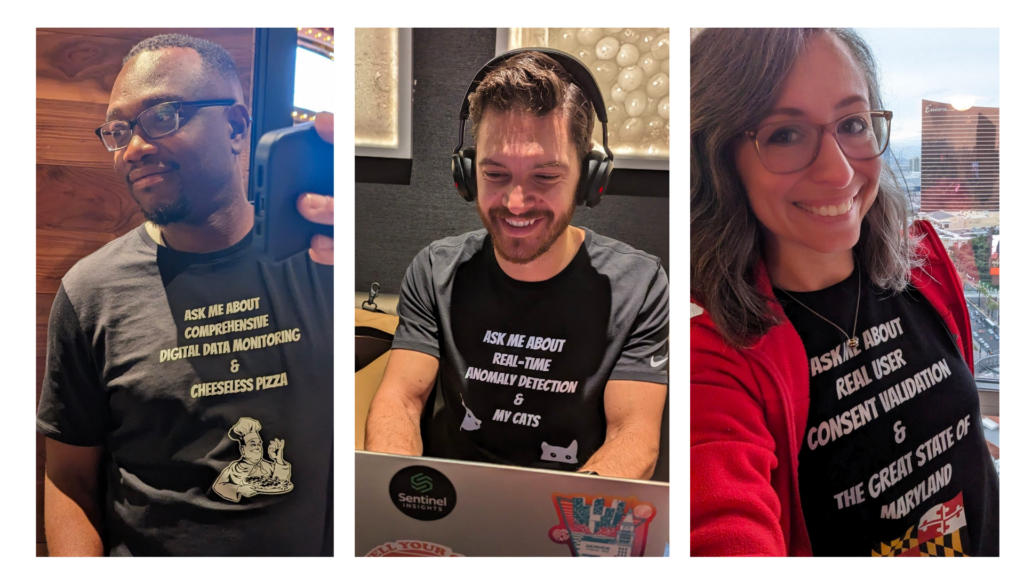If you’ve been following along on our blog or LinkedIn, you probably know by now that each member of the Sentinel Insights team wore similar, but subtly different t-shirts at Adobe Summit:
Well, the shirts did their jobs and we each had a bunch of people asking about these topics, so we thought it was a good idea to write about it here as well.
This blog series will cover these topics:
- Comprehensive Digital Data Monitoring
- Real-Time Anomaly Detection
- Real User Consent Validation
Today’s topic: Real User Consent Validation! by none other than yours truly, Erin Ankeny.

Introvert Life Hack: wear a shirt that tells people why they should talk to you.
I probably should start by explaining why I picked this topic for my version of the shirt. A few years ago, my team and I were charged with implementing a consent management platform (CMP) at one of the world’s leading financial institutions. It was a project that was as exciting and interesting as it was challenging. My team and I ended up releasing to production 47 times in one month, across 40+ web properties, to support the goal – which we achieved ever-so-slightly ahead of schedule.
I know how difficult consent management is. I know how critical it is to get right. And most importantly, I know how easy it is to get wrong.
Since joining the team at Sentinel Insights, we’ve worked with dozens of organizations to discuss their consent management strategies and we’ve reviewed their websites. After analysis, it turns out that only about 30% of the websites we review have zero consent problems at that point in time. In 70% of cases, there’s something happening somewhere that violates a user’s consent settings. It’s usually not obvious, either.
It’s worth noting, these issues wouldn’t be (and aren’t) captured by anything other than by inspecting real user activity on the site.
This is why having an automated tool like Sentinel Insights is so important. MarTech teams simply can’t spend the time and energy to test every use case, every edge case, and every race condition. It’s just not possible. And in order to have complete peace of mind that your data privacy practices are sound, you need automation to make sure everything’s good.
Let me be clear, this is not a slam on the implementation and QA teams working on this very difficult task! My team and I got plenty of things wrong, and sometimes it took us a while to realize it. The best MarTech teams in the world have struggled with this very issue. But they don’t have to.
We’d love to provide a demo or quick introductory call to go into more detail. Just click the Book a Demo button up at the top of the page and we’ll get back to you asap.





